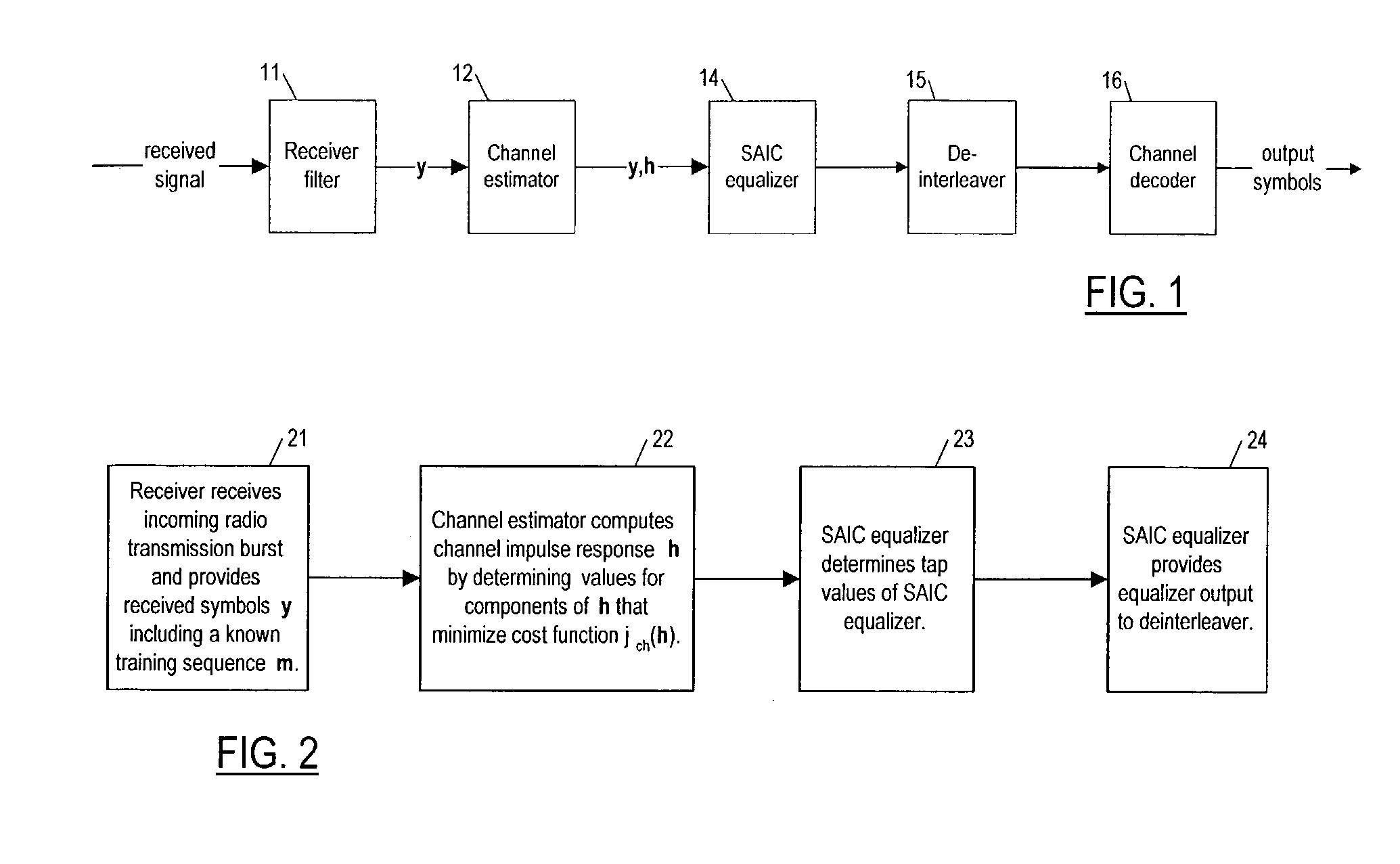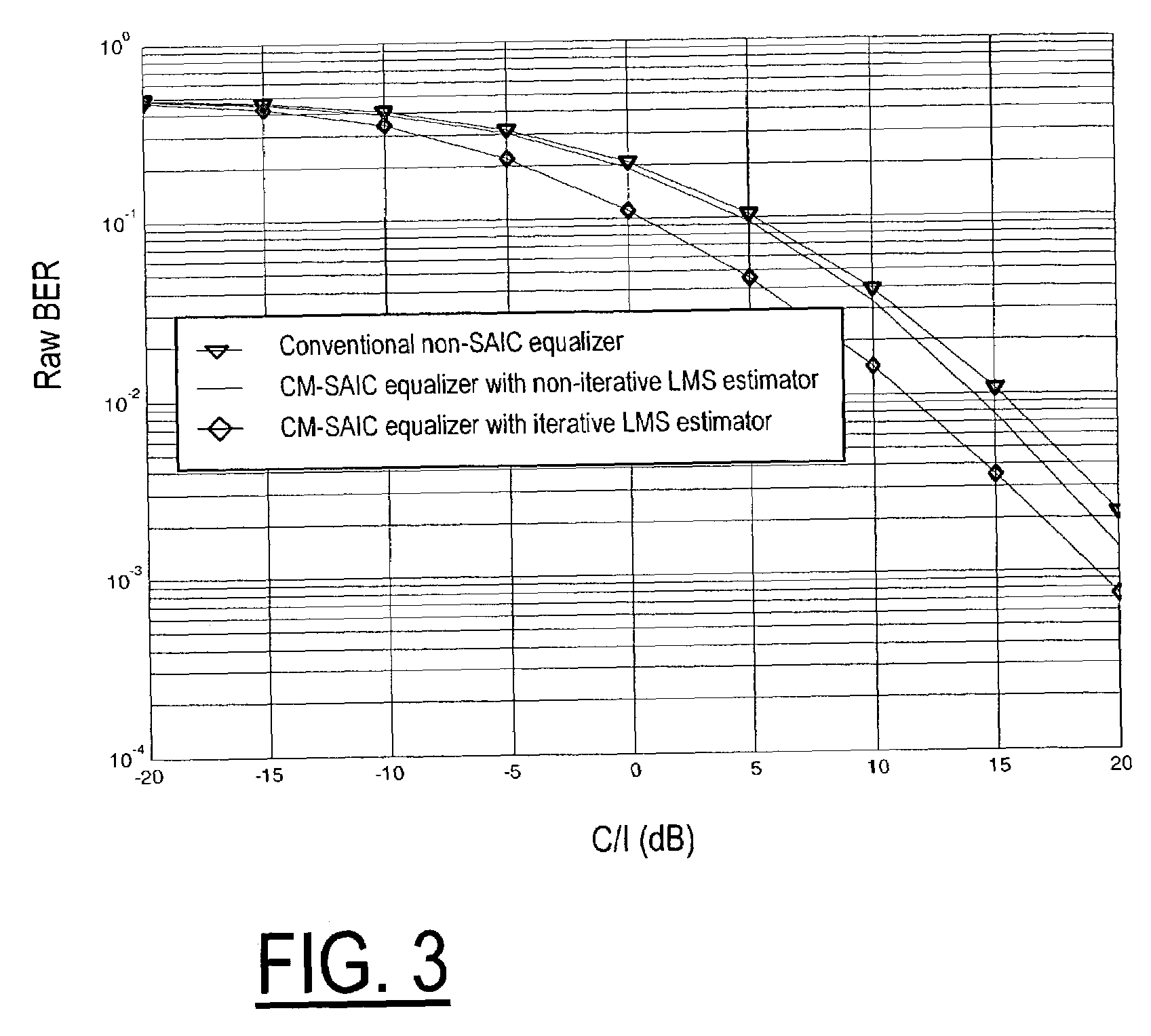Method and apparatus for determining components of a channel impulse response for use in a SAIC equalizer
a channel impulse response and component technology, applied in the field of cellular network receivers, can solve the problems of difficult use of more than one antenna, receiver performance suffers, and mobile terminals using cellular networks often experience interference from various sources, so as to minimize the cost function and minimize the cost function
- Summary
- Abstract
- Description
- Claims
- Application Information
AI Technical Summary
Benefits of technology
Problems solved by technology
Method used
Image
Examples
Embodiment Construction
[0018]Referring now to FIG. 1, a cellular network receiver in which the invention can be used is shown as including a receiver filter 11 (typically a finite impulse response matched filter), which provides a filtered and sampled (baseband) waveform with the (received) samples indicated here as components of a vector y. The receiver filter 11 is followed by a channel estimator 12, such as e.g. a constant modulus channel estimator, which assumes constant modulus (constant signal power) for any interfering signals. Using as an input the received samples y, the channel estimator provides the values of the components of the channel impulse response h with components hi, and the components hi are then used by later stages in the receiver in a nonlinear symbol or sequence detector or in calculating tap values for a transversal filter used by the receiver in determining transmitted symbols from received symbols. The channel estimator, in the embodiment shown, provides the channel impulse re...
PUM
 Login to View More
Login to View More Abstract
Description
Claims
Application Information
 Login to View More
Login to View More - R&D
- Intellectual Property
- Life Sciences
- Materials
- Tech Scout
- Unparalleled Data Quality
- Higher Quality Content
- 60% Fewer Hallucinations
Browse by: Latest US Patents, China's latest patents, Technical Efficacy Thesaurus, Application Domain, Technology Topic, Popular Technical Reports.
© 2025 PatSnap. All rights reserved.Legal|Privacy policy|Modern Slavery Act Transparency Statement|Sitemap|About US| Contact US: help@patsnap.com



